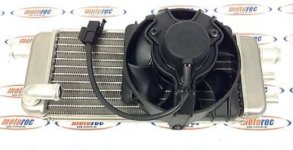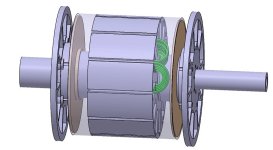larsb
1 MW
My wish for this motor is to get a good system efficiency and reliability. A route to go cheaper on the controllers seems backwards to me as it lowers both.
A set of double kelly kls7230 controllers would be my first choice. That's 2/3 of the Adaptto mid cost and could give 15kW
..if you believe kelly specs 8)
I've tried them both as singles on the same setup and didn't see a big diff, the kelly seemed to run a bit smoother than Adaptto.
15kW on 85% efficiency is still 2250W of heat. I wonder how large the radiator and flow would be needed to cool this.
Would a small computer cooler like this be anywhere near enough?
https://m.aliexpress.com/s/item/32751871472.html?spm=a2g0n.search-cache.0.0.6a970d6bVKJaRh
A set of double kelly kls7230 controllers would be my first choice. That's 2/3 of the Adaptto mid cost and could give 15kW
..if you believe kelly specs 8)
I've tried them both as singles on the same setup and didn't see a big diff, the kelly seemed to run a bit smoother than Adaptto.
15kW on 85% efficiency is still 2250W of heat. I wonder how large the radiator and flow would be needed to cool this.
Would a small computer cooler like this be anywhere near enough?
https://m.aliexpress.com/s/item/32751871472.html?spm=a2g0n.search-cache.0.0.6a970d6bVKJaRh



